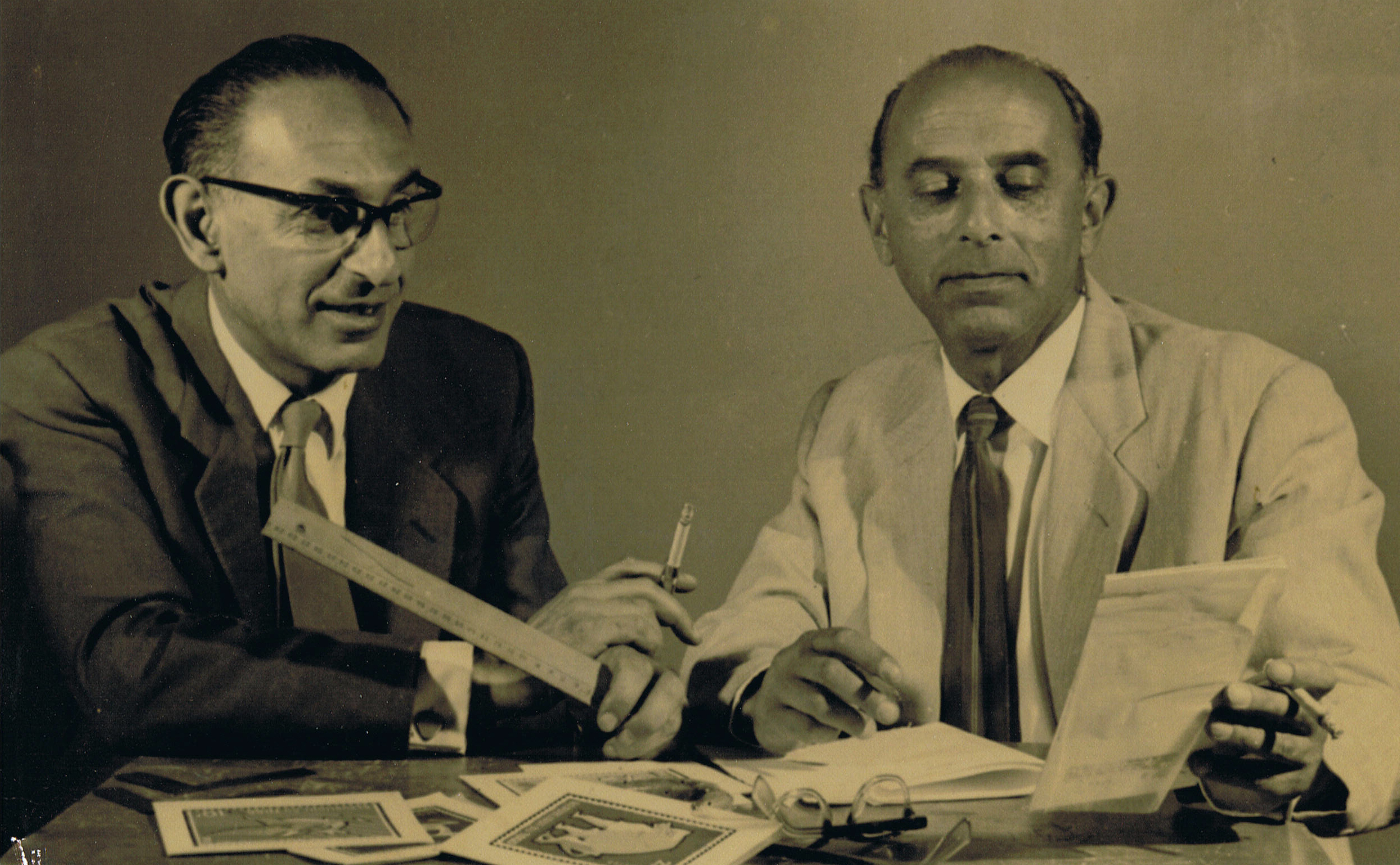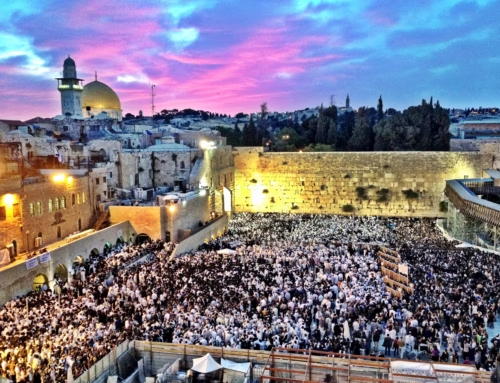National emblem of Israel
Three weeks after the establishment of the State of Israel in 1948, the government issued a call for the young nation’s graphic designers to submit proposals for a design for the country’s emblem. The committee in charge of the commission specified that the symbol should have the menorah as its main element

Gabriel and Maxim Shamir designed the emblem of the State of Israel, which was approved by the government on February 10, 1949. Photo: Yoram E. Shamir
Of the hundreds of proposals received, the committee chose a design submitted by brothers Gabriel and Maxim Shamir: a menorah with an olive branch on each side. The committee asked the Shamir brothers to make the menorah look more ancient and also to add Israel’s name, Haaretz wrote in May 2016.
The result was the emblem of the State of Israel, which the government approved on February 10, 1949.
Menorah is a seven-branched candlestick which means “lamp” in Hebrew. The original menorah was made for the tabernacle during the desert trek. It had lamps for olive oil and would illuminate “the holy place”. It was then installed in the newly built temple that King Solomon built in Jerusalem.
Depicted on Arch of Titus
The menorah of the emblem is more specifically depicted on the Arch of Titus found in Rome and erected after the triumph of the Romans in the capture of Jerusalem during the First Jewish-Roman War.
The olive tree often appears in the Bible with reference to fruitfulness, wholeness, peace and blessings. It is one of the seven species with which the land was blessed according to Deuteronomy 8:8: “It is a land of wheat and barley, of vines, fig trees and pomegranate trees, a land of fine olive trees and honey.”
Olive trees are also associated with “taking root” in the country. In addition to the state emblem, the olive tree appears in the emblem of the Israeli Defense Forces (IDF).
The state emblem is usually blue and white, but the Israeli presidential emblem has a darker blue color.
Born in Latvia
Gabriel and Maxim Shamir also designed Israel’s official medals, stamps and banknotes.
Gabriel and Maxim Shamir were born in Latvia and studied graphics and design in Germany.
They were active 1931 — 1933 for the advertising agency Gumalius in Stockholm. In 1934 they opened a graphic design studio in Latvia before immigrating to Tel Aviv where they founded a studio on Rothschild Boulevard.
The emblem draws inspiration from the vision described by the biblical prophet Zechariah in chapter 4 when he sees a menorah with two olive trees, one on either side: “I see a lampstand, all of gold, with its oil bowl on top of it, and its seven lamps. Seven pipes lead to the seven lamps up there. Two olive trees extend over it, one on the right side of the bowl and one on the left.”


